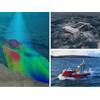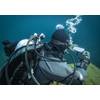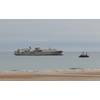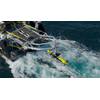Report on Health of Seagrass in Cleveland Bay
Port of Townsville Limited (POTL) has released the 2015 Annual Seagrass Health Survey carried out in Cleveland Bay during 2015.
The survey, commissioned annually since 2007 at a cost of around $70,000 per year, is carried out by James Cook University’s (JCU) Centre for Tropical Water & Aquatic Ecosystem Research (TropWATER).
JCU scientist in charge of the program Dr Michael Rasheed said that the results of the monitoring in Townsville over the past few years were encouraging, with a large scale recovery of seagrasses being recorded.
“This program is part of a network of seagrass monitoring along the east and west coast of Queensland conducted with funding and support from Queensland port authorities. Townsville has been a stand-out in terms of the speed of recovery of seagrasses from widespread losses that occurred to 2011,” Dr Rasheed said.
“This monitoring partnership has resulted in a substantial contribution to the understanding of seagrass health across the State, with data gathered in some ports now spanning more than 20 years".
Results of the 2015 Annual Seagrass Survey in Townsville show that seagrasses in Cleveland
Rank “good” or “very good” for area and species composition indicators in most
Have increased in total area for the fourth consecutive year;
Have lower biomass scores than last year due to a range of climatic conditions;
Are in satisfactory overall condition.
Port of Townsville Limited Manager Environment & Strategic Planning Melinda Louden said that the recovery observed so far following the extreme weather events in 2011 was a promising sign
for the marine environmental health of the bay.
“The seagrass health survey that we commission annually is now in its ninth year and the data it has produced for us so far has been very valuable in tracking the health of the marine environment around our port,” Ms Louden said.
“Seagrass communities are a vital element of the Great Barrier Reef and their health is one indicator that reef managers can use to understand the overall health of the marine environment.”
The annual survey details seagrass species and density, and maps areas of meadows by recording observations within three random quadrats (a square thrown onto the seagrass bed to define the area being recorded) at hundreds of sites in Cleveland Bay.
Surveys in intertidal areas involve the use of a helicopter which hovers within a metre of the seagrass bed to record data.
Sub-tidal areas are also surveyed using a combination of snorkelers, CCTV cameras and underwater sled tows which collect samples and images for analysis.
The data is stored and analysed using a Geographical Information System and outputs are mapped to indicate seagrass health for the area.
During the 2015 survey dugong feeding trails were observed in a number of areas around the bay, a sign the recovery of seagrasses is supporting important animal life.
The next survey is scheduled for October/November 2016.
















 February 2024
February 2024



